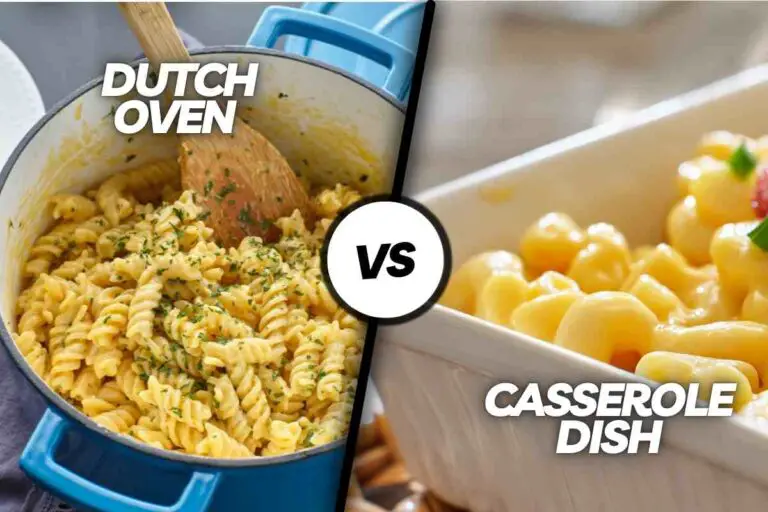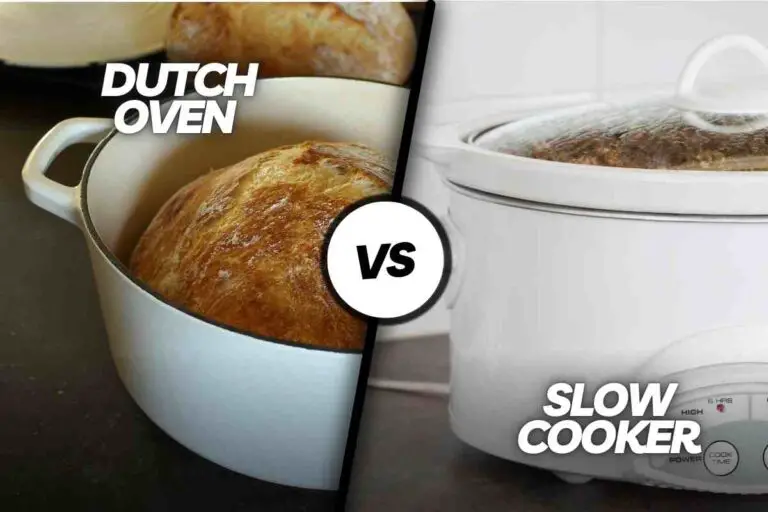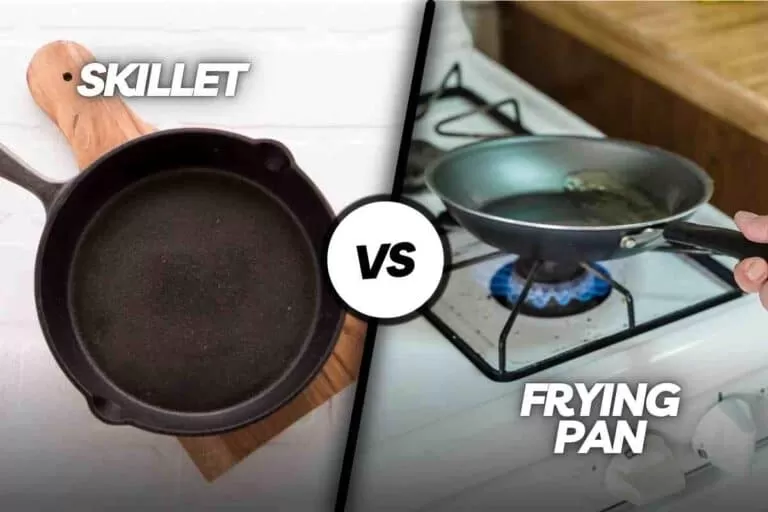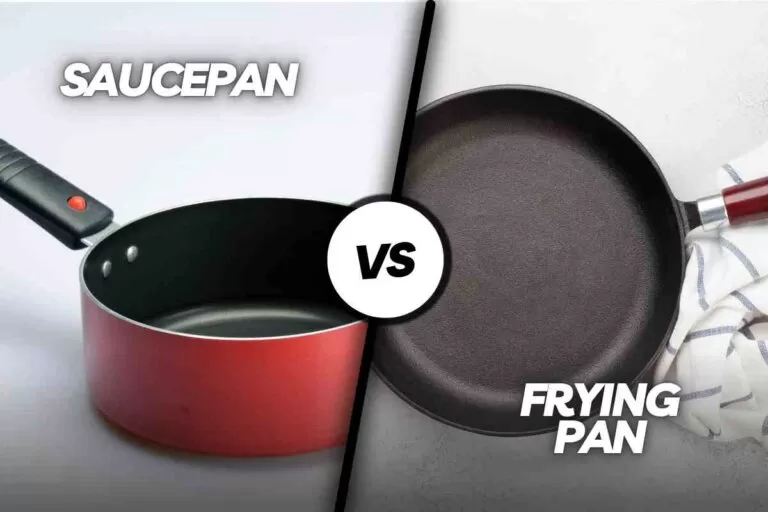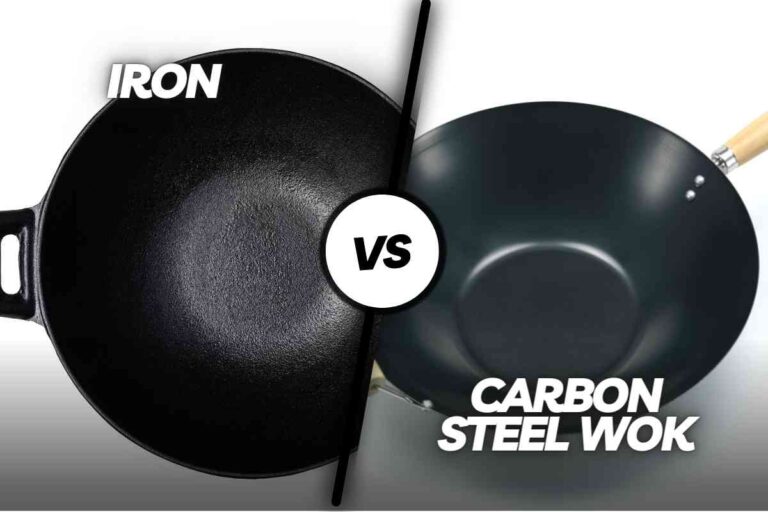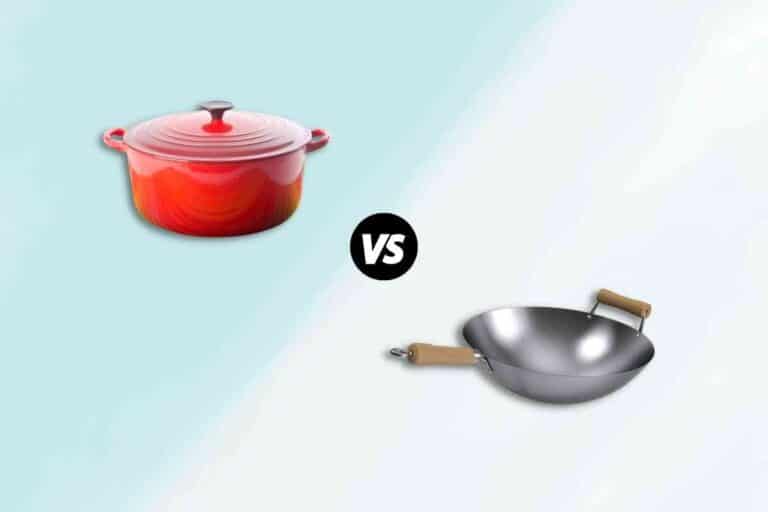5 Key Differences: Wok Vs Stir Fry Pan
The main difference between a Wok and a Stir-Fry Pan lies in their geometry and cooking applications. Woks have steep sloping sides and a rounded bottom, providing even heat distribution and versatility for various cooking techniques, including stir-frying and deep-frying.
In contrast, a Stir-Fry Pan has a wide and completely flat bottom, making it ideal for cooking soft foods, especially fragile meats and vegetables, without the need for constant stirring.
Woks are designed for continuous stirring, while Stir-Fry Pans are better suited for gentle, non-stirring cooking. Woks are versatile, suitable for stir-frying and deep frying, while stir-fry pans can handle various cooking methods beyond stir-frying.
Stir-fry pans are compatible with most kitchen stoves, making them a convenient choice for many home cooks. While woks are best paired with high-output gas stoves.
Using a wok effectively, especially for tossing, may require practice and skill development. Stir-fry pans are generally more beginner-friendly.
5 Aspects: Wok Vs Stir Fry Pan
| Aspect | Wok | Stir-Fry Pan |
|---|---|---|
| Shape | Rounded with high sides for tossing | Flat-bottomed and shallow |
| Heat Distribution | Even heat distribution | May have hot spots |
| Versatility | Ideal for stir-frying and deep frying | Suitable for various cooking methods |
| Learning Curve | Requires practice for tossing | Beginner-friendly |
| Kitchen Setup | Best on high-output gas stove | Compatible with most stoves |
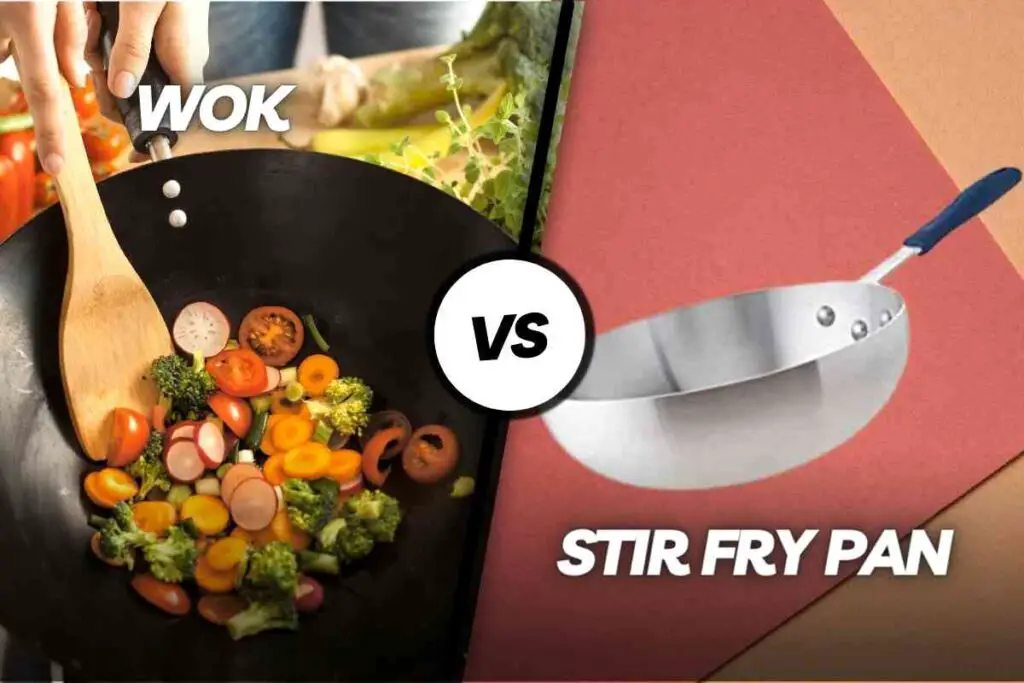
Commercial vs. Home Kitchens
Before delving into the world of woks and stir-fry pans, it’s crucial to consider the setting where your culinary masterpiece will unfold. The primary distinction lies between commercial and home kitchens.
Commercial Kitchens
In commercial kitchens, the stage is set for high-octane cooking. Here, professional chefs harness the power of high-output gas stoves, making round-bottom woks their weapon of choice.
These stoves deliver intense heat, ideal for the quick, even cooking required for stir-frying. The round-bottom wok, when paired with a wok ring, fits perfectly on these stoves, offering stability and efficient heat distribution.
Home Kitchens
Home kitchens, on the other hand, typically feature less powerful gas stoves or electric stoves. This crucial difference in heat output can significantly impact your choice of cookware for stir-frying.
Now that we’ve set the stage, let’s explore three distinct setups for cooking stir-fried dishes, each catering to different kitchen scenarios.
Three Setups for Cooking Stir Fry
1. The Easiest Setup
Nonstick Skillet + Gas/Electric Stove
If you’re looking for a hassle-free way to whip up a quick stir-fry in your home kitchen, this setup is your go-to option. Here’s what it entails:
Pros:
- Ease of Use: Nonstick skillets are beginner-friendly and easy to clean.
- Reduced Oil Usage: Nonstick surfaces require less oil for cooking, promoting healthier eating.
Cons:
- Limited Heat: Home stoves often lack the high heat required for traditional stir-frying.
- Shallow Pan: The shallow design of a skillet may limit the quantity of food you can cook at once.
This setup is perfect for those who want a quick and simple stir-fry without the complexities of specialized cookware.
2. The Authentic Setup
Round-Bottom Carbon Steel Wok + Wok Ring + High Output Gas Range
If you’re aiming for an authentic stir-fry experience that rivals your favorite Chinese restaurant, this setup is the path to culinary nirvana:
Pros:
- Better Heat Control: High-output gas stoves provide the intense heat needed for proper stir-frying.
- Authentic Stir-Fry Experience: The round-bottom wok’s design allows for efficient tossing and quick cooking.
Cons:
- Learning Curve: Mastering the art of stir-frying in a wok takes practice.
- Potential Smoke: The high heat can generate smoke, so adequate ventilation is essential.
This setup is for the dedicated home chef willing to invest time and effort to achieve restaurant-quality stir-fry dishes.
3. The Next Best Thing
Heavy-Duty Deep Skillet + Electric Stove or Round-Bottom Cast Iron Wok + Less Powerful Gas Range
For those who want to strike a balance between convenience and performance, this setup offers a compelling option:
Pros:
- High Heat: The use of a cast iron wok or a heavy-duty skillet on a less powerful gas range can provide sufficient heat for good stir-frying.
- Ease of Tossing Food: These cookware options allow for effective food tossing.
Cons:
- Weight: Cast iron woks and heavy skillets can be cumbersome.
- Potential Smoke: As with the authentic setup, be prepared for some smoke when using high heat.
This setup is a versatile choice that combines the convenience of familiar cookware with the ability to achieve higher temperatures for stir-frying.
Importance of Stir Fry Spatula and Cookware Brands
While the choice of wok or pan is crucial, don’t overlook the importance of the stir-fry spatula.
The right spatula ensures you can effortlessly flip and toss ingredients during the high-heat cooking process. Look for spatulas designed with flat edges and long handles for better control.
When it comes to cookware brands, investing in quality can pay off in the long run. Brands like Joyce Chen, Lodge, and Calphalon offer a range of woks and skillets designed for stir-frying.
Opting for reputable brands can ensure your cookware withstands the rigors of high-heat stir-frying.
Individual Goals and Preferences
Ultimately, the choice between a wok and a stir-fry pan depends on your individual cooking goals and preferences.
Consider factors such as your kitchen setup, your level of expertise, and the frequency of your stir-frying adventures.
If you’re a beginner or prefer quick and easy stir-fries, a nonstick skillet may be your best friend.
Those seeking an authentic experience can embrace the round-bottom carbon steel wok, while others may find the compromise of a heavy-duty skillet or cast iron wok on a less powerful stove suits their needs.
Regardless of your choice, remember that following stir-fry best practices and using tried-and-true recipes can lead to better and healthier homemade Chinese dishes.
Conclusion
In the world of stir-frying, your choice of cookware can elevate your culinary creations to new heights. Whether you opt for the simplicity of a nonstick skillet, the authenticity of a round-bottom wok, or the versatility of a heavy-duty skillet, each setup has its merits.
So, next time you’re ready to stir-fry, consider your kitchen’s capabilities, your cooking style, and your ambitions in the culinary realm.
Armed with the right cookware and a dash of inspiration, you’ll be well on your way to mastering the art of stir-frying and savoring delicious homemade Chinese dishes.
RELATED POSTS

